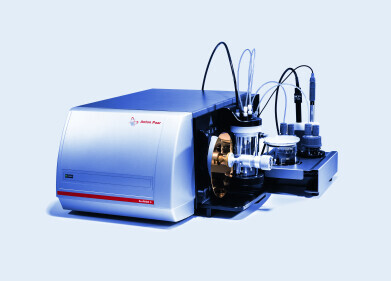Laboratory Products
Lab scientists create energy from viruses
May 14 2012
Laboratory scientists have devised a way to convert harmless viruses into electricity with a generator that has enough current to operate a small liquid-crystal display.
The new technology could enable you to perform tasks such as charging your phone as you walk, with the generator being thin enough to fit into the sole of your shoe. The device works by tapping a finger on a postage-stamp-sized electrode coated with specially engineered viruses, which then convert the force of the tap into an electric charge.
Scientists from the US Department of Energy’s Lawrence Berkeley National Laboratory (Berkeley Lab) developed the technology, which is the first to produce electricity by harnessing the piezoelectric properties of a biological material. Piezoelectricity is the accumulation of a charge in a solid in response to mechanical stress, and could be the start of many devices that harness energy from the vibrations of everyday tasks.
It also creates giant steps in the field of nanotechnology, as it offers a self-assembly solution. The viruses arrange themselves into an orderly film which enables the generator to work, which is a much simpler solution than most other complicated and delicate nanotechnology processes available.
It also points to a simpler way to make microelectronic devices. That’s because the viruses arrange themselves into an orderly film that enables the generator to work. Self-assembly is a much sought-after goal in the finicky world of nanotechnology.
Seung-Wuk Lee, a faculty scientist in Berkeley Labs Physical Biosciences Division and a UC Berkeley associate professor of bioengineering said: “More research is needed, but our work is a promising first step toward the development of personal power generators, actuators for use in nano-devices, and other devices based on viral electronics.”
The researchers will now look at ways of improving the proof-of-principle demonstrations, but if the technology is proved to be efficient, there could be large-scale production of genetically modified viruses which could offer a simple route to novel microelectronics in the future.
Posted by Ben Evans
Digital Edition
Lab Asia 31.2 April 2024
April 2024
In This Edition Chromatography Articles - Approaches to troubleshooting an SPE method for the analysis of oligonucleotides (pt i) - High-precision liquid flow processes demand full fluidic c...
View all digital editions
Events
Apr 24 2024 Jakarta, Indonesia
Apr 25 2024 Istanbul, Turkey
Apr 28 2024 Montreal, Quebec, Canada
May 05 2024 Seville, Spain
InformEx Zone at CPhl North America
May 07 2024 Pennsylvania, PA, USA


















